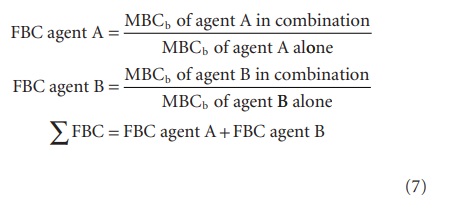Tests for Biofilm Susceptibility
| Home | | Pharmaceutical Microbiology | | Pharmaceutical Microbiology |Chapter: Pharmaceutical Microbiology : Laboratory Evaluation Of Antimicrobial Agents
Biofilms present is an additional problem to antimicrobial testing, as the biofilm may be resistant to more than 1000 times the MIC concentration of antimicrobial. Antimicrobial testing of biofilms under standardized conditions has really only become available since 1999 and the development of the MBEC Assay (Calgary Biofilm Device).
TESTS
FOR BIOFILM SUSCEPTIBILITY
Biofilms present is an
additional problem to antimicrobial testing, as the biofilm
may be resistant to more than
1000 times the MIC concentration of antimicrobial.
Antimicrobial testing
of biofilms under standardized conditions has really
only become available since 1999 and the development of the MBEC Assay (Calgary Biofilm Device). Previous techniques for biofilm
susceptibility testing suffered
from a lack of replicates, as in the case of flow cell technology, or the need for continuous pumping of fluids and bacteria that
presented a leakage and contamination risk that
was not tolerable in a diagnostic laboratory. Forming biofilms
directly in 96-well plates provided replicate numbers,
but in this assay system the initial
inoculum could not be calculated and the efficacy of treatment was based not on viable
cell counts but on a dye absorbance assay that could
be measuring a change in extracellular matrix rather than a
change in viable bacterial cell number. The MBEC assay placed pegs protruding from
the lid of the plate
into each well of a 96-well
plate. Shear force
created by gyration
of the plate
initiated bacterial adhesion
to the peg and biofilm formation, the density of which could
be determined by sonication of the biofilm
back into a suspension culture
and enumeration of viable cell number by standard plate counts.
The peg-borne biofilms
could then be used as a biofilm
inoculation in a standard 96-well MIC assay, only
in this case
the susceptibility of a biofilm rather than a planktonic
population would be determined. Following antimicrobial exposure bacteria would again be sonicated from the pegs and counted
to determine the biofilm MIC (BMIC), biofilm
bactericidal concentration
(BMBC) and biofilm
eradication concentration
(MBEC) in a highly standardized and reproducible assay based on existing MIC technology. Mycobacteria
and fungi can be assayed using
a similar format
allowing the biofilm susceptibility of these organisms to be tested.
a) Synergy Biofilm Assays
The reduced
susceptibility of biofilms
to antimicrobials often results
in the effective in vitro drug
concentration to far exceed
a safe or achievable dose.
Combinations of drugs or drugs and other cofactors are proving to be more effective against biofilms than
single drug therapies. Synergies in biofilm
testing have been defined on formulas based on the American
Society for Microbiology standards. The calculation of synergy as defined in Harrison et al. (2008) where
the mathematical definition of synergy was based
on the sum
of the fraction bactericidal concentration (FBC) value or FBC index for each combination of antimicrobial agents. Therefore in a
two-component assay of agents
A + B synergy would
be defined as follows:

Related Topics
